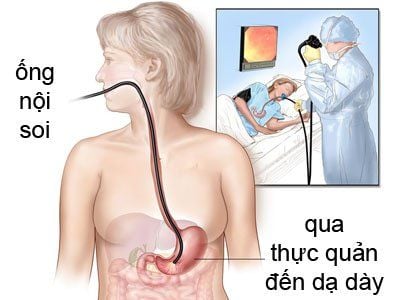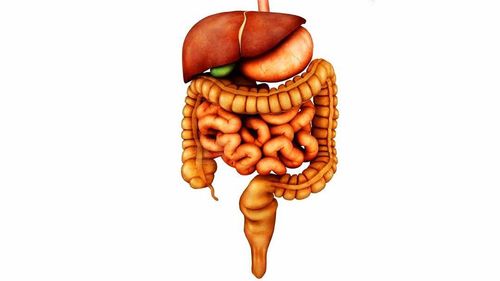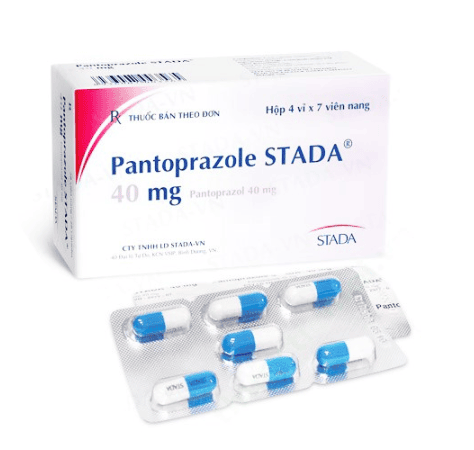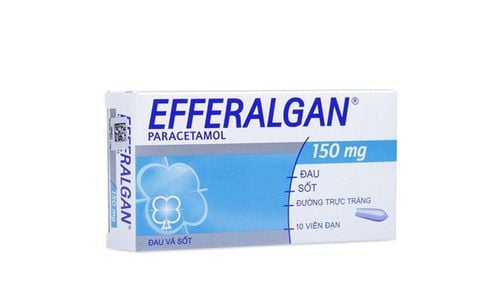This is an automatically translated article.
The article is professionally consulted by a Gastroenterologist, Department of Medical Examination & Internal Medicine - Vinmec Danang International General Hospital.
Interventional endoscopic hemostasis is one of the most applied techniques in the field of gastrointestinal endoscopy. Thanks to this method, a large number of patients are treated with minimal invasiveness, shortening the recovery time.
1. What is endoscopic hemostasis?
Endoscopic hemostasis injection is a method of therapeutic intervention aimed at stopping bleeding lesions through gastrointestinal endoscopy. This method can be applied to lesions at any position during the endoscopic procedure with the advantage of a simple, cost-effective technique that can be easily applied. The mechanism of action of the injection solution consists of physiological saline mixed with Adrenalin causing swelling of the submucosal tissue layer, pressing on bleeding blood vessels to stop bleeding and adrenaline causing local vasoconstriction. However, today it is not recommended to use this method alone, but in combination with other methods of hemostasis.
2. When is endoscopic hemostasis needed?
Endoscopic hemostasis is indicated in the majority of patients hospitalized in the context of upper gastrointestinal bleeding or lower gastrointestinal bleeding. Specific pathologies for these indications are:
Esophageal varices. Mallory Weiss Syndrome. Inflammation - ulcer - hemorrhagic cancer in the esophagus. Inflammation - ulceration - hemorrhagic cancer in the stomach - duodenum. Inflammatory - ulcer - hemorrhagic cancer in the colon. Bleeding internal hemorrhoids.

Nội soi can thiệp cầm máu có chỉ định cho bệnh nhân viêm - loét – ung thư xuất huyết ở dạ dày – tá tràng
3. How is the endoscopic hemostasis procedure?
Interventional endoscopic hemostasis of the gastrointestinal tract is essentially the same as any other interventional endoscopic procedure.
Before entering the intervention room, all patients are thoroughly examined and routine tests are performed. Thereby, the doctor will assess the overall health status. If the patient does not respond to medical treatment, endoscopic hemostasis is indicated.
Patients and relatives are consulted and explained about the need for endoscopic hemostasis on the gastrointestinal tract in the diagnosis and treatment of the disease if indicated.
In addition, the procedure and possible risks are also carefully presented for the patient's understanding and acceptance. Then, pre-endoscopic preparations such as fasting or enema and monitoring facilities are arranged before the final endoscopy begins.
For cases of bleeding in the upper gastrointestinal tract (esophagus - stomach - duodenum), the patient will be instructed to lie on the left side, do not strain, try to breathe deeply and steadily through the nose. and mouth coordinate with swallowing as the technician inserts the endoscope into the mouth. The surface of the digestive tract segments will be carefully observed and evaluated and intervened as soon as the bleeding site is detected. Specifically, patients admitted to the hospital because of massive vomiting with blood, endoscopy found that the esophageal veins were dilated, they will be quickly inserted tools to stop bleeding on the spot by sclerotherapy, tying .. . to block bleeding.
If the patient comes because of black stools with persistent epigastric pain, the doctor will also focus on looking for ulcers on the gastric mucosa - duodenum and inject local hemostatic drugs, clip clips. Not only that, a mucosal sample will be taken and taken out, testing to assess the presence of Helicobacter Pylori bacteria right at the endoscopy room.
In cases of bleeding in the lower gastrointestinal tract (colon framework), the access route will enter the anal opening. Usually the source of bleeding is from ulcerative colitis or a tumor, polyps will be stopped by colonoscopy with injections, sclerotherapy to prevent continued bleeding.

Bệnh nhân và thân nhân đều được tư vấn, giải thích về sự cần thiết của nội soi cầm máu trên đường tiêu hóa trong chẩn đoán kết hợp điều trị bệnh
4. What are the advantages of endoscopic hemostasis intervention at Vinmec Da Nang?
Interventional endoscopic hemostasis injection on the gastrointestinal tract has been widely implemented at Vinmec Danang International General Hospital. Prominent is the endoscopic system EviqExera 3, CLV 190 with the only magnification function in Da Nang. In addition, there is a high resolution flexible gastrointestinal endoscope NBI (Narrow Band Imaging) of Olympus (Japan) manufacturer with the ability to diagnose cancer of the gastrointestinal tract (oesophagus - stomach - colorectal). colon) at an early or very early stage.
Thanks to this, patients after intervention can recover completely, without the need for additional methods such as chemotherapy, radiation therapy, improving quality of life. An advantage of the machine is the use of natural light in parallel with the endoscopic mode with high resolution and narrow light band mode, thereby helping the doctor to analyze more thoroughly, in more detail, recognize Early bleeding risk points through changes in the mucosal surface layer of the gastrointestinal tract and the superficial capillary system that nourishes the mucosa.
Regarding the means of resuscitation support, the endoscopy room of Vinmec Danang International General Hospital is always fully equipped for use at any time. At the core of these devices is the Carescape R860 premium ventilator, which not only ensures comprehensive respiratory support, but also helps monitor other vitals.
These parameters are shown on a 15'' touch screen with a sensor monitor that monitors blood oxygen levels, monitors FRC functional residual capacity, thereby helping to find the optimal PEEP, plot the main P-V curve Accurately with alveolar pressure, monitor indirect metabolic energy and patient EtCO2, indirectly calculate cardiac output, volume and other respiratory parameters. In addition, this latest generation ventilator functions as an SBT natural breathing training tool, ensuring fast and safe weaning off the ventilator for patients.
In addition, before performing the procedure at Vinmec Da Nang International General Hospital, all patients are thoroughly screened according to the procedure to improve the effectiveness of the intervention process, by visiting visit a specialist in gastroenterology.
Specialist doctor II, Master Phan Thi Minh Huong has over 30 years of experience in the field of Gastroenterology, continuously achieved advanced labor for many years, emulation soldier, Awarded Certificate of Merit from the Minister of Health Certificate of Merit from the Prime Minister, Awarded the title of Excellent Doctor.
Please dial HOTLINE for more information or register for an appointment HERE. Download MyVinmec app to make appointments faster and to manage your bookings easily.













